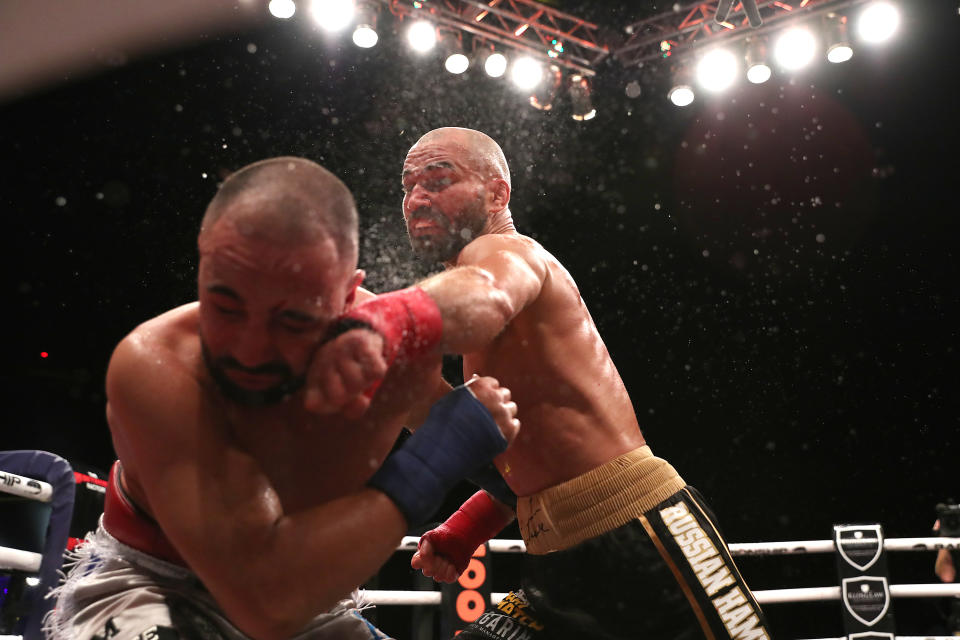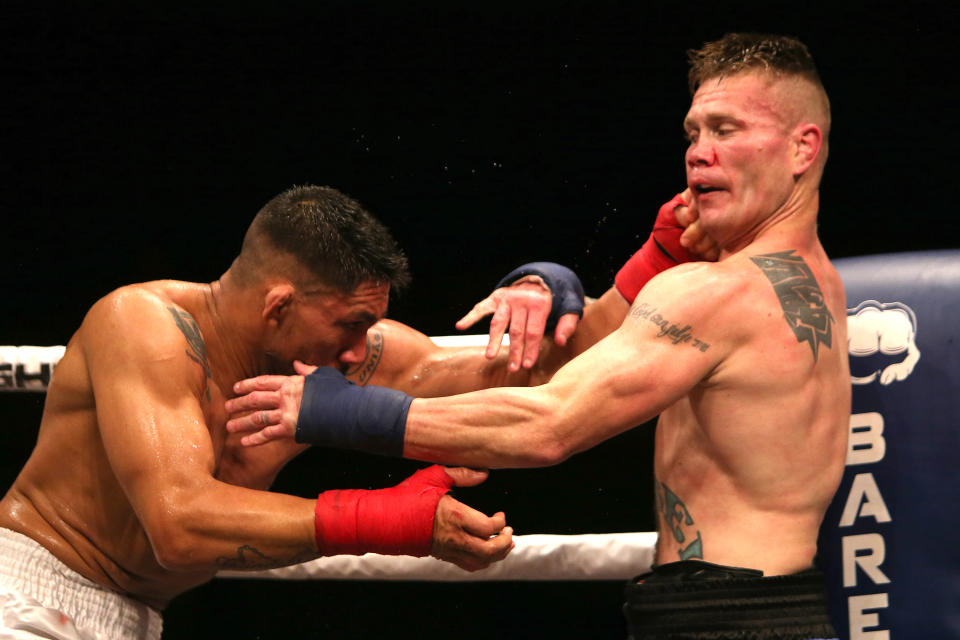Is bare-knuckle boxing awful, great or something in between?

Professional so-called “bare-knuckle” boxing has become a thing, again, the past couple years. “So-called” because the athletes don’t actually fight with bare hands as they did in years past — instead they have tape on their hands and wrists and battle without gloves, although with the knuckles exposed.
The lack of gloves increases cuts to the face and so the affairs are often bloodier than mainstream boxing or mixed martial arts contests. In any case, whatever you want to call it, this stuff is gaining a following with many well-known boxers and mixed martial arts athletes fighting under the banner of the several new bare-knuckle promotions that have popped up in the past couple years.
If you haven’t watched any of these bouts or events, you may have still read stories about them or heard chatter on social media forums. Typically, the discussion slides far to one side of the approval/disapproval spectrum or the other.
You may have heard how bare-knuckle boxing is the most brutal, horrible thing in sports. It is not. Or, you may have read that it’s the best, most bad-ass combat sport out there. Also, it is not. There’s some good, bad and ugly when it comes to the emerging bare-knuckle trend.
As far as the good, fighters having more options when it comes to places they can make money is never a bad thing.
Fighting is a tough way to make a living and boxers and MMA fighters alike are often restricted severely when it comes to promotions they can work with to make ends meet. Professional fighters, without effective unions or associations in either boxing or MMA, don’t have much power or say in their lives and careers, and typically have a precarious existence with few employment options able to pay them enough to get by.
So, fighters now have a couple new places to try and get a check from. Good.
On the bad and ugly tip, it isn’t uncommon for new fight promotions to have solvency or other problems that make athlete non-payment/wage theft a huge issue. Take, for example, the World Bare Knuckle Fighting Federation which relied heavily on the name and reputation of its president Bas Rutten to attract big names from MMA like Phil Baroni, Chris Leben and former UFC welterweight champion Johny Hendricks.

The fighters all did their part on a card in Casper, Wyoming, over a year ago, but then simply were not paid. In April, former UFC middleweight Chris Leben said he still hadn’t received his pay check and was in the process of suing the World Bare Knuckle Fighting Federation.
Events that do pay, like Bare Knuckle FC, have still taken a vulgar, threatening and possibly illegal approach with fighters — publicly threatening non-payment for bouts that their president David Feldman unilaterally deems not exciting enough. That’s more from the ugly column.
That highlights one of the more subtle but fundamentally problematic parts of the bare-knuckle phenomenon — its appeal seems to be about pure titillation. When it comes to what we now call MMA, I’m a purist.
I love the mixing of different martial arts styles under liberalized rules so that we can better understand what works in many one-on-one self-defense situations. Martial arts are fun, great exercise, and often exciting, of course.
Their fundamental appeal, however, is their utility.
I want to know what works, what really works, when lots of prohibitions are stripped away. It’s what prompted my father to have us watch UFC 1 on television, live, and what subsequently got me in a Brazilian Jiu-Jitsu gym at 15, and why I continue in MMA to this day as a coach after years of fighting as an amateur.
Lots of sports are good workouts and fun to participate in and watch. Martial arts, when done well, are all that but also life skills. For those reasons, I’ve long championed a return to traditional Vale Tudo or No-Holds-Barred style rules (but with the addition of things like blood testing, ringside physicians and other elements we now thankfully have in professional MMA) and parameters like athletes not wearing gloves or using hand wraps or tape while competing.
This cant be legal?!?! #BKBFC5 pic.twitter.com/5gyMlkRbWo
— ZombieProphet (@GIFsZP) April 7, 2019
The lack of wrapped/taped and gloved hands in MMA means less punches thrown at and absorbed by participants’ skulls and an increased reliance on realistic grappling tactics, meaning less brain damage suffered by fighters. You’ll never see an un-gloved MMA fighter with many available tools at his or her disposal in competition throw hundreds of punches at the head of their opponents the way we see endurance machines like the Diaz brothers do in modern MMA while having their hands protected.
So, not wearing gloves in MMA would mean a safer sport in terms of brain trauma (cuts are always going to be more common, but skin trauma is less important than brain trauma) because there are so many available techniques and positions for those athletes. Taking the gloves off in boxing, where fighters are not allowed to grapple on their feet for extended periods, and not at all on the mat, simply means risk for more blood and broken hands.
It’s a show with more gore, which is likely the point. The blood doesn’t offend me, but the evident desire to draw it out as a central purpose of the sport instead of seeing what works when diversified tools are available under liberalized rules, certainly does.
While I broadly like fighters having more options to make money, it is concerning that so many of the fighters switching over to bare-knuckle boxing are only doing so after aging and hitting walls in boxing or MMA. Johny Hendricks lost five out of his last six MMA fights and retired citing an unwillingness to go through the “grind” of the sport any longer. Then, he went to bare-knuckle boxing.
Phil Baroni has fought pro MMA for over 19 years, now, and has lost six out of his last eight MMA contests, while also making a move to and losing in bare-knuckle competition. Even former world champion boxer Paulie Malignaggi heeded the siren song of bare-knuckle boxing after losing three out of his final six conventional boxing fights by TKO or KO.
More options can be good for fighters, but not if they already should stop fighting altogether. The final worry, then, is that bare-knuckle boxing is giving aging fighters reason to stick around too long and take more punishment than they should.
More from Yahoo Sports:
